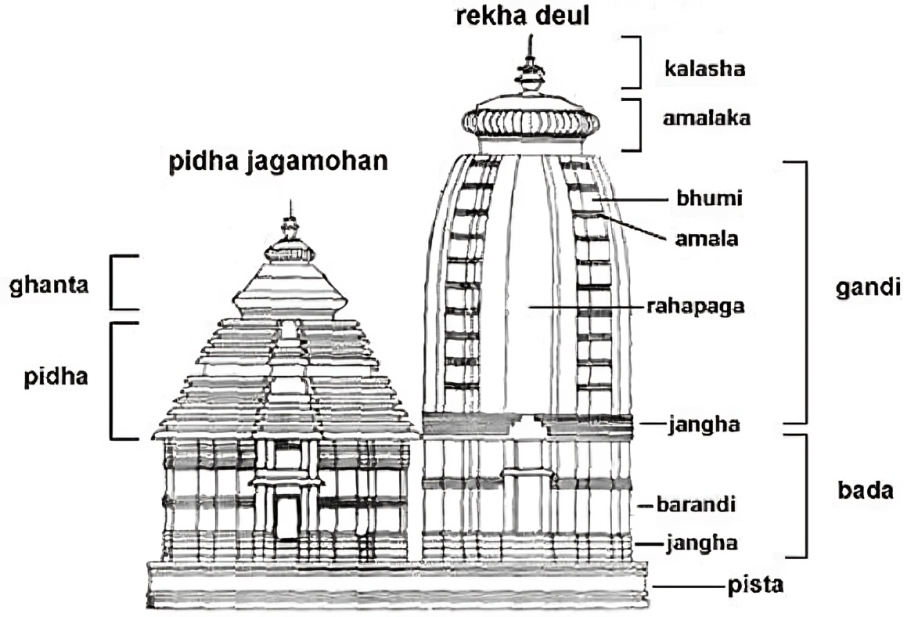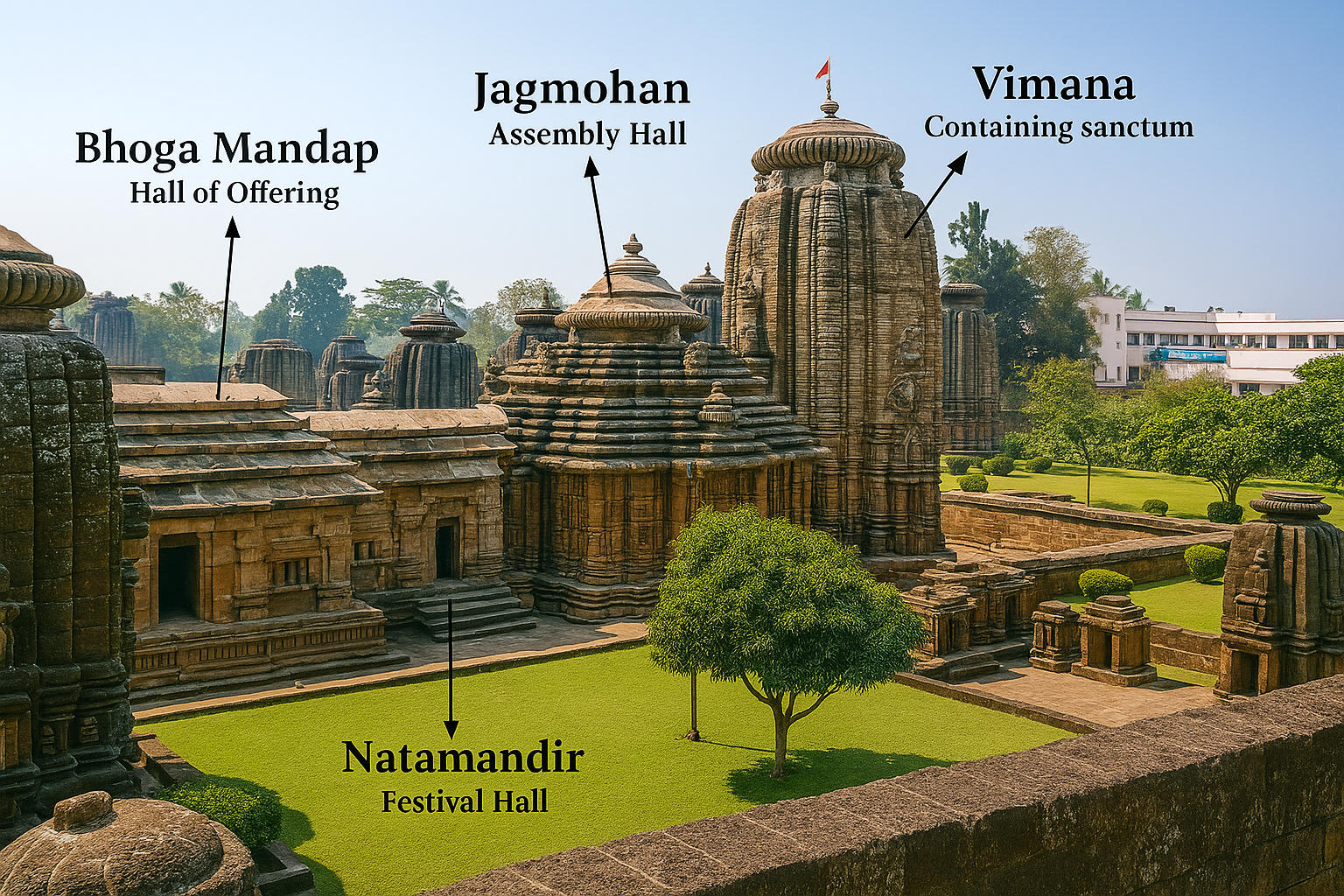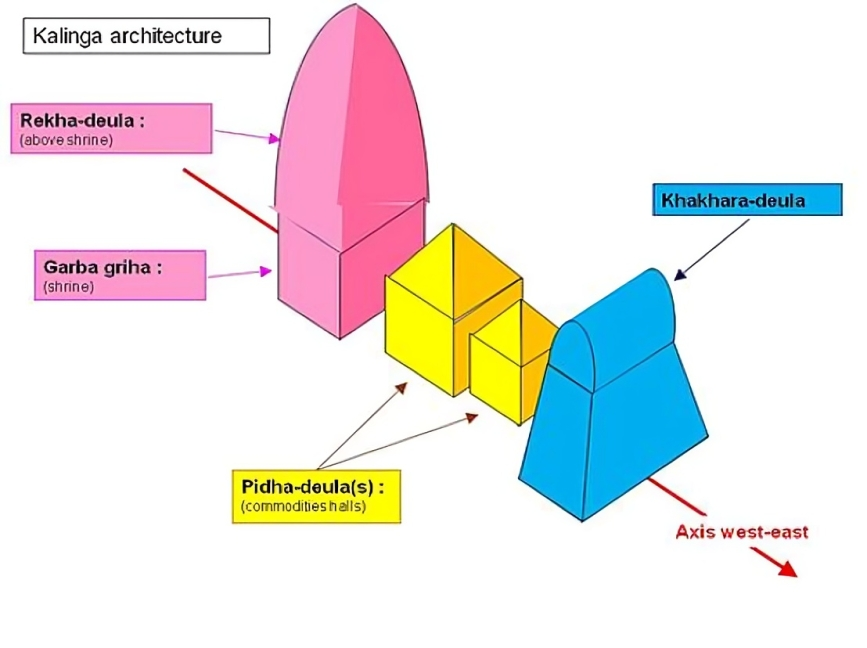Jagannath Temple
📅 Last updated: June 23, 2025 2 min read
📰 Why in News?
- Prime Minister Narendra Modi recently declined an invitation from former U.S. President Donald Trump for a scheduled visit, citing prior spiritual commitments at the sacred Jagannath Temple in Puri, Odisha.
- This development has once again drawn national and global attention to the religious and cultural importance of the temple.
🏛️ About Jagannath Temple, Puri
- The Jagannath Temple is a Vaishnavite temple dedicated to Jagannath, a form of Sri Krishna.
- It was rebuilt from the 10th century onwards by Anantavarman Chodaganga Deva, the first king of the Eastern Ganga dynasty, on the site of an earlier shrine.
- Renowned for its Kalinga architecture, the temple reflects Odisha’s ancient architectural heritage.
- It is world-famous for the annual Ratha Yatra festival, in which the three principal deities—Jagannath, Subhadra, and Balabhadra—are paraded in massive, beautifully decorated chariots.
- The temple worship is traditionally performed by the Bhil Sawar tribal priest community, reflecting the temple’s inclusive ritual system.
- Unlike most Hindu temples, the image of Jagannath is made of wood. The ritual of changing these wooden forms is known as Nabakalebara, which takes place every 8, 12, or 19 years.
- The temple has been closely associated with prominent Vaishnava saints like Ramanujacharya, Madhvacharya, Nimbarkacharya, Vallabhacharya, and Ramananda.
- It holds deep spiritual value for followers of Gaudiya Vaishnavism, especially as Chaitanya Mahaprabhu spent considerable time here in devotion to Lord Jagannath.
- Ramanujacharya founded the Emar Mutt near the temple, while Adi Shankaracharya established the Govardhan Math, one of the four Shankaracharya seats.
- The temple is one of the four Char Dham pilgrimage sites for Hindus, alongside Badrinath, Dwaraka, and Rameswaram.
- Non-Hindus are not permitted to enter the temple premises.
- The temple’s consecration ceremonies are elaborate and deeply spiritual events, preserving centuries-old traditions.
🏛️ Architectural Grandeur of Jagannath Temple
- The Jagannath Temple showcases the brilliance of Kalinga architecture, renowned for its sculptural elegance and structural harmony.
- The sprawling temple complex covers over 400,000 square feet and is enclosed within two protective walls:
- Meghanada Pacheri – The outer fortified wall.
- Kurma Bedha – The inner wall encircling the sanctum.
📰 Why in News?
- Prime Minister Narendra Modi recently declined an invitation from former U.S. President Donald Trump for a scheduled visit, citing prior spiritual commitments at the sacred Jagannath Temple in Puri, Odisha.
- This development has once again drawn national and global attention to the religious and cultural importance of the temple.
🏛️ About Jagannath Temple, Puri
- The Jagannath Temple is a Vaishnavite temple dedicated to Jagannath, a form of Sri Krishna.
- It was rebuilt from the 10th century onwards by Anantavarman Chodaganga Deva, the first king of the Eastern Ganga dynasty, on the site of an earlier shrine.
- Renowned for its Kalinga architecture, the temple reflects Odisha’s ancient architectural heritage.
- It is world-famous for the annual Ratha Yatra festival, in which the three principal deities—Jagannath, Subhadra, and Balabhadra—are paraded in massive, beautifully decorated chariots.
- The temple worship is traditionally performed by the Bhil Sawar tribal priest community, reflecting the temple’s inclusive ritual system.
- Unlike most Hindu temples, the image of Jagannath is made of wood. The ritual of changing these wooden forms is known as Nabakalebara, which takes place every 8, 12, or 19 years.
- The temple has been closely associated with prominent Vaishnava saints like Ramanujacharya, Madhvacharya, Nimbarkacharya, Vallabhacharya, and Ramananda.
- It holds deep spiritual value for followers of Gaudiya Vaishnavism, especially as Chaitanya Mahaprabhu spent considerable time here in devotion to Lord Jagannath.
- Ramanujacharya founded the Emar Mutt near the temple, while Adi Shankaracharya established the Govardhan Math, one of the four Shankaracharya seats.
- The temple is one of the four Char Dham pilgrimage sites for Hindus, alongside Badrinath, Dwaraka, and Rameswaram.
- Non-Hindus are not permitted to enter the temple premises.
- The temple’s consecration ceremonies are elaborate and deeply spiritual events, preserving centuries-old traditions.
🏛️ Architectural Grandeur of Jagannath Temple
- The Jagannath Temple showcases the brilliance of Kalinga architecture, renowned for its sculptural elegance and structural harmony.
- The sprawling temple complex covers over 400,000 square feet and is enclosed within two protective walls:
- Meghanada Pacheri – The outer fortified wall.
- Kurma Bedha – The inner wall encircling the sanctum.


🧱 Major Structural Divisions
- Vimana / Deula (Sanctum Sanctorum): Enshrines the deities Jagannath, Balabhadra, and Subhadra on the Ratna Vedi. Built in the Rekha Deula style with a towering curvilinear spire.
- Mukhashala (Frontal Porch): Connects the inner sanctum to the assembly hall, serving as a transitional structure.
- Natamandira / Jagamohan (Assembly Hall): Also called the Dancing Hall, it serves as the congregation space for devotees.
- Bhoga Mandapa (Offerings Hall): Designated for the preparation and offering of Mahaprasad.
🏗️ Kalinga Temple Architecture
- Kalinga architecture flourished in ancient Odisha (formerly Kalinga or Utkal) and is classified into three distinctive temple styles:
- Rekha Deula: Features a tall, curvilinear spire; used for sanctums like the Garbhagriha.
- Pidha Deula: Pyramid-shaped roof structure; used for halls such as Jagamohan and Bhoga Mandapa.
- Khakhara Deula: Barrel-shaped roof; commonly used for temples associated with goddesses and tantric practices.
- "Rekha" means "straight line" in Odia, symbolizing the vertical elevation of the shikhara over the sanctum.
- Prominent examples include the Jagannath Temple in Puri and the Lingaraja Temple in Bhubaneswar.
- Rekha Deula: Features a tall, curvilinear spire; used for sanctums like the Garbhagriha.
- Pidha Deula: Pyramid-shaped roof structure; used for halls such as Jagamohan and Bhoga Mandapa.
- Khakhara Deula: Barrel-shaped roof; commonly used for temples associated with goddesses and tantric practices.

💎 The Ratna Bhandar of Jagannath Temple
- The Ratna Bhandar, or treasure chamber, of the Jagannath Temple in Puri was recently accessed after a gap of nearly four decades.
- The last official inventory of the Ratna Bhandar was conducted in 1978, marking a gap of 46 years.
- An attempt was made in 2018 to open the inner chamber, following an order from the Orissa High Court, but it could not be executed as the keys were reportedly missing.
- The Ratna Bhandar, approximately 60 square metres in size, is located on the northern side of the Jagamohana (Assembly Hall) within the temple premises.
- This chamber houses the precious ornaments and jewels of Lord Jagannath, Balabhadra, and Goddess Subhadra, accumulated over centuries from devotees and erstwhile kings.
- The Ratna Bhandar is divided into two main sections:
- Bahara Bhandar (Outer Chamber): Opened regularly during festivals and key rituals to access ornaments used for adorning the deities.
- Bhitara Bhandar (Inner Chamber): Stores the most valuable and antique ornaments, generally inaccessible to the public.
- The Record of Rights, prepared under the Puri Sri Jagannath Temple Act, 1952, documents the details of the temple's treasures.
- The jewellery in the Ratna Bhandar is classified into three categories:
- Category 1: Ornaments that are permanently unusable and stored in the Bhitara Bhandar.
- Category 2: Ornaments used occasionally during festivals and special ceremonies.
- Category 3: Ornaments used on a daily basis for the deities; both Category 2 and 3 items are kept in the outer chamber.
- As per the Sri Jagannath Temple Act, 1954 (Orissa Act II of 1955), the Sri Jagannath Temple Managing Committee is responsible for the secure custody and management of the Ratna Bhandar.
💎 The Ratna Bhandar of Jagannath Temple
- The Ratna Bhandar, or treasure chamber, of the Jagannath Temple in Puri was recently accessed after a gap of nearly four decades.
- The last official inventory of the Ratna Bhandar was conducted in 1978, marking a gap of 46 years.
- An attempt was made in 2018 to open the inner chamber, following an order from the Orissa High Court, but it could not be executed as the keys were reportedly missing.
- The Ratna Bhandar, approximately 60 square metres in size, is located on the northern side of the Jagamohana (Assembly Hall) within the temple premises.
- This chamber houses the precious ornaments and jewels of Lord Jagannath, Balabhadra, and Goddess Subhadra, accumulated over centuries from devotees and erstwhile kings.
- The Ratna Bhandar is divided into two main sections:
- Bahara Bhandar (Outer Chamber): Opened regularly during festivals and key rituals to access ornaments used for adorning the deities.
- Bhitara Bhandar (Inner Chamber): Stores the most valuable and antique ornaments, generally inaccessible to the public.
- The Record of Rights, prepared under the Puri Sri Jagannath Temple Act, 1952, documents the details of the temple's treasures.
- The jewellery in the Ratna Bhandar is classified into three categories:
- Category 1: Ornaments that are permanently unusable and stored in the Bhitara Bhandar.
- Category 2: Ornaments used occasionally during festivals and special ceremonies.
- Category 3: Ornaments used on a daily basis for the deities; both Category 2 and 3 items are kept in the outer chamber.
- As per the Sri Jagannath Temple Act, 1954 (Orissa Act II of 1955), the Sri Jagannath Temple Managing Committee is responsible for the secure custody and management of the Ratna Bhandar.

Learning often happens in classrooms but
it doesn’t have to.
Contact us : +91 78380 91015 (Whatsapp)
92112 65654 (For Call)
mail to : HeMantraofficialhelp@gmail.com
